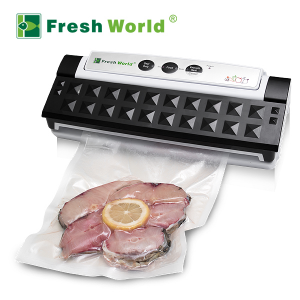The Science Behind Vacuum Packing Chicken
Introduction
Vacuum packing is a popular method used in the food industry to preserve the quality and freshness of various products, including chicken. This technique involves removing air from the packaging, creating a vacuum seal that helps extend the shelf life of the chicken. But what is the science behind vacuum-packing chicken? Let’s explore the process and the scientific principles that make it effective.
The Importance of Oxygen Removal
The primary principle behind vacuum packing is the removal of oxygen. Oxygen is a key factor in the spoilage of food as it promotes the growth of bacteria, moulds, and yeasts. By removing the oxygen from the packaging, the growth of these microorganisms is significantly slowed down, thus preserving the quality and safety of the chicken.

Vacuum Packing Process
When chicken is vacuum packed, the air is extracted from the packaging using a vacuum packing machine. This machine creates a low-pressure environment inside the packaging, causing the air to be drawn out. As a result, the oxygen is removed, and a vacuum seal is created.
Creating an Anaerobic Environment
The absence of oxygen in the packaging creates an anaerobic environment, meaning an environment without oxygen. This environment is unfavourable for the growth of most spoilage-causing microorganisms. Bacteria, for example, require oxygen to survive and multiply. By depriving them of oxygen, their growth is inhibited, and the chicken remains fresh for a longer period of time.
Inhibiting Bacterial Growth
In addition to inhibiting bacterial growth, vacuum packing also helps prevent oxidation. Oxidation is a chemical reaction that occurs when oxygen comes into contact with the fats and proteins in chicken. This reaction can lead to the development of off-flavours, discoloration, and a loss of nutritional value. By removing the oxygen, vacuum packing helps to slow down the oxidation process, preserving the taste, colour, and nutritional content of the chicken.
Pressure Reduction and its Effects
Another scientific principle at play in vacuum packing is the reduction of atmospheric pressure. When the air is removed from the packaging, the pressure inside decreases. This reduction in pressure has several effects on the chicken. Firstly, it causes the expansion of air bubbles within the chicken’s tissues. This expansion helps to tenderise the meat, making it more succulent and flavorful.
Retaining Moisture during Cooking
Additionally, the reduction in pressure also lowers the boiling point of water. This means that when the chicken is cooked, the lower pressure inside the packaging allows the water to boil at a lower temperature. As a result, the chicken retains more moisture and remains juicy and tender.

Limitations and Considerations
It is important to note that while vacuum packing can significantly extend the shelf life of chicken, it is not a foolproof method. Some bacteria, such as anaerobic bacteria, can still grow in the absence of oxygen. Therefore, proper handling, storage, and temperature control are still essential to ensure the safety of vacuum-packed chicken.
Conclusion
In conclusion, the science behind vacuum-packing chicken lies in the removal of oxygen and the creation of an anaerobic environment. By depriving bacteria of oxygen and inhibiting oxidation, vacuum packing helps preserve the quality, taste, and nutritional value of the chicken. Additionally, the reduction in pressure can tenderise the meat and improve its cooking properties. Understanding the scientific principles behind vacuum packing can help businesses in the food industry make informed decisions about packaging and preserving chicken products.



